2024 Triumph Daytona 660
Triumph will relaunch the Daytona model in 2024 powered by the 660 cc engine from the Trident, albeit with boosted performance to position the new model more firmly in the sport category. That said, this is not a hard core Supersport bike like some previous 675 or 765 Moto2 Daytona machines.
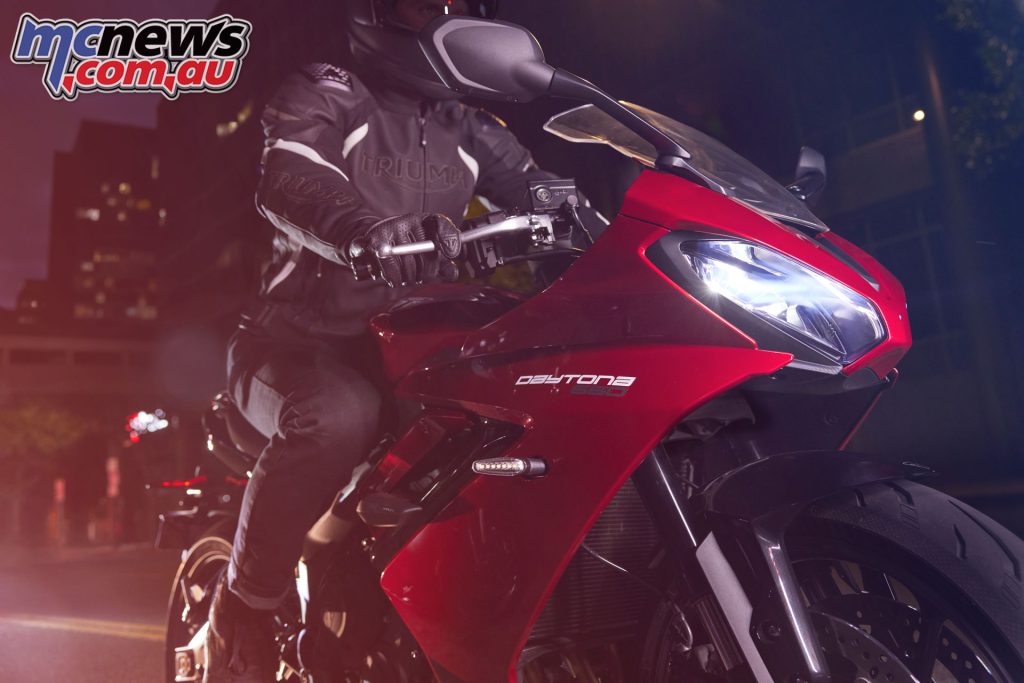
While that’s unlikely to please the racers out there, it does mean the new Daytona 660 should have much wider appeal, with a more relaxed ergonomic, lower seat height, and as a generally more suitable everyday machine.
The performance boost will see the Daytona 660 produce 95 hp and 69 Nm of torque, up 17 per cent and 9 per cent respectively. 80 per cent of that torque is available from just 3125 rpm, with a redline set at 12,650 rpm.
Helping unleash that iconic triple howl is also a new three-into-one underslung exhaust which also helps centralise and keep weight low on the bike.

Updates to achieve these figures include a new crankshaft with increased gear width, new camshaft and cam profiles, new cylinder head, pistons and gudgeon pins, plus new valve gear, with the Daytona looking fairly close to the Trident until about 7500 rpm for power, where it runs away based on the dyno charts provided. See the gallery below for the charts.
Triumph reckon that the engine offers the benefits of a revvable four-cylinder, alongside the torque of a twin. That’s hard to argue with after having owned a 675R for a number of years, and having tested the Trident 660. Naturally, there’s a slipper clutch, as we saw on the Trident, but it looks like a quick-shifter is an accessory, not standard fitment.
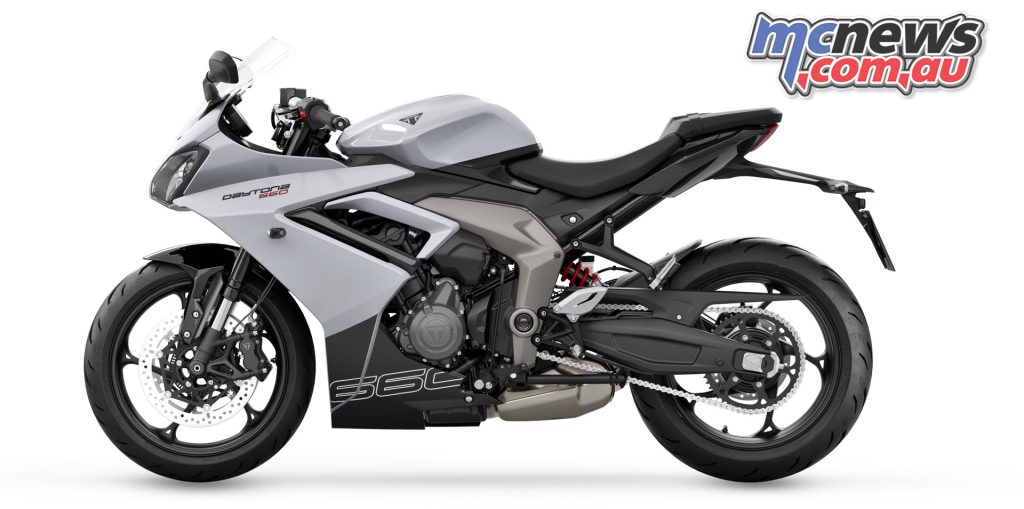
Triumph Motorcycles Australia has also confirmed a LAMS version, which interestingly boasts a 41.9 kW (57 hp) and 62 Nm performance figure, with not much lost where it matters – in torque. That’s a relatively high power figure for a LAMS machine, but the Daytona 660 weighs in at 201 kg wet, up 12 kg on the Trident, which is where the power to weight ratio has seen Triumph able to sell the LAMS machine with a few more neddies than we generally see.
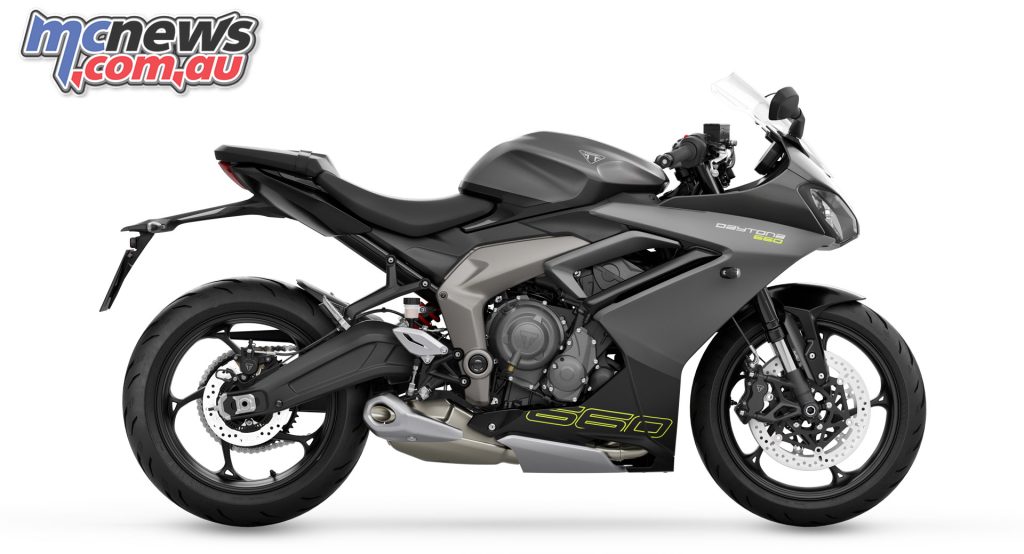
On the ergonomic side of the equation we see an 810 mm seat height, which should be reasonably inviting for most riders, and the handlebar placement is much taller than on previous Daytona models, but also significantly sportier than on the Trident.
The chassis runs a set of 41 mm Showa Separate Function Big Piston forks, matched to a Showa monoshock RSU, with the only adjustment found at the rear in the form of pre-load.
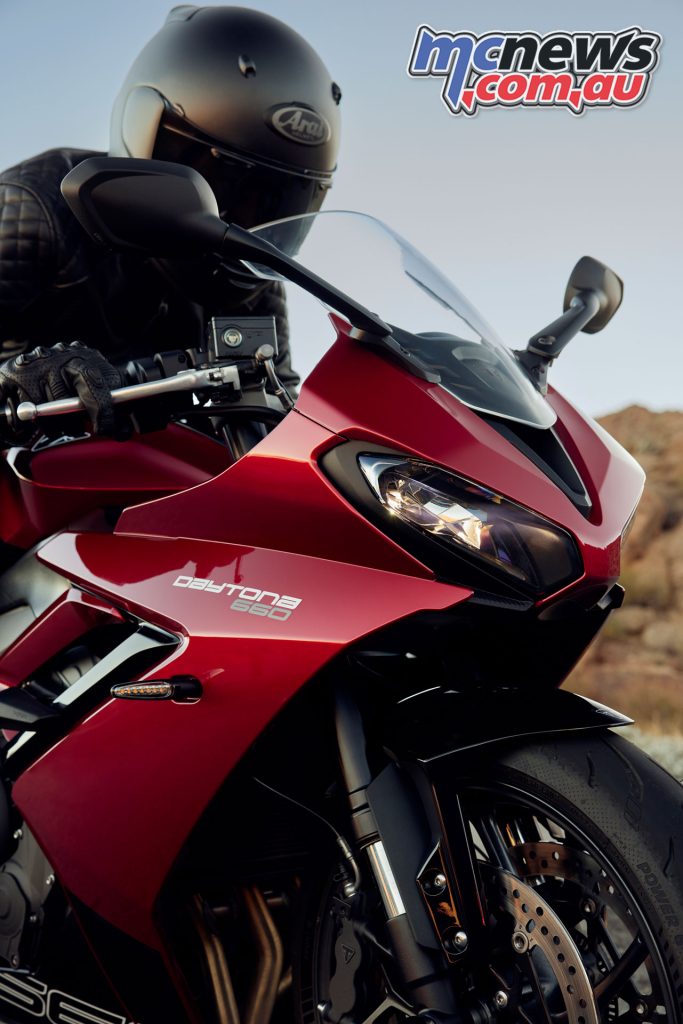
Brakes have been beefed up from the Trident with four-piston radial calipers and 310 mm floating rotors with braided lines all round.
The ABS and switchable traction control are integrated into the riding modes, which comprise of Sport, Road and Rain, and accessed via a colour TFT, which is My Triumph connectivity compatible.
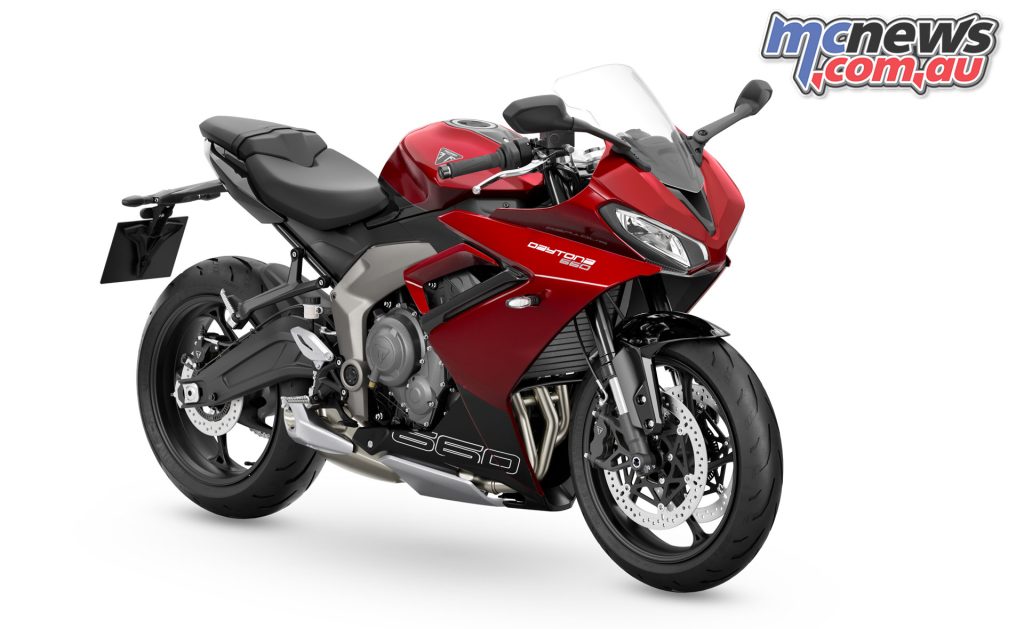
Fuel capacity is 14 litres and the bike is Euro 5+ compliant with 16,000 km or 12 month service intervals.
Wheels look to be the same cast aluminium offerings on the Trident, in a 3.50 x 17 front and 5.50 x 17 rear, while the tubular steel perimeter frame is also retained, but hidden away behind the fairings and a more extensive cover on the new Daytona.
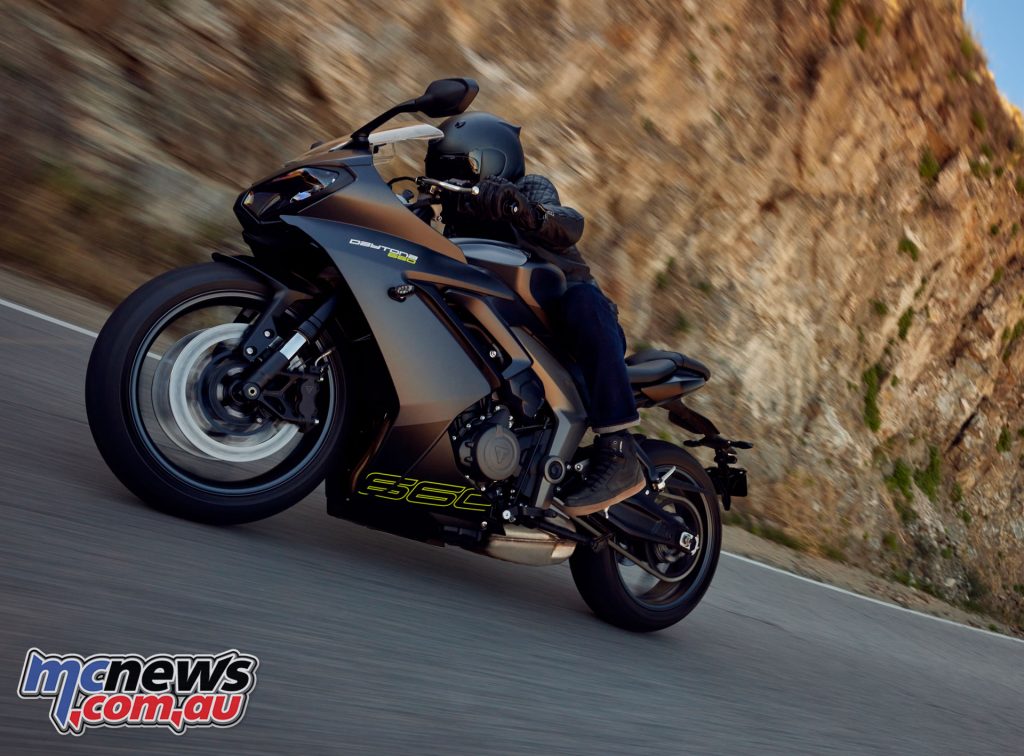
Rake and trail are 23.8° and 82.3 mm respectively, compared to 24.6° and 107.3 mm on the Trident, which should sharpen up the steering and responsiveness to rider inputs for an even more engaging ride.
Styling does follow in the earlier Daytona theme, although we’re seeing a stubbier tail, and not quite as aggressive lines, which is probably more in keeping with the sport class. Competition would seem to be motorcycles like the R7, GSX-8R, CBR650R and Ninja 650.
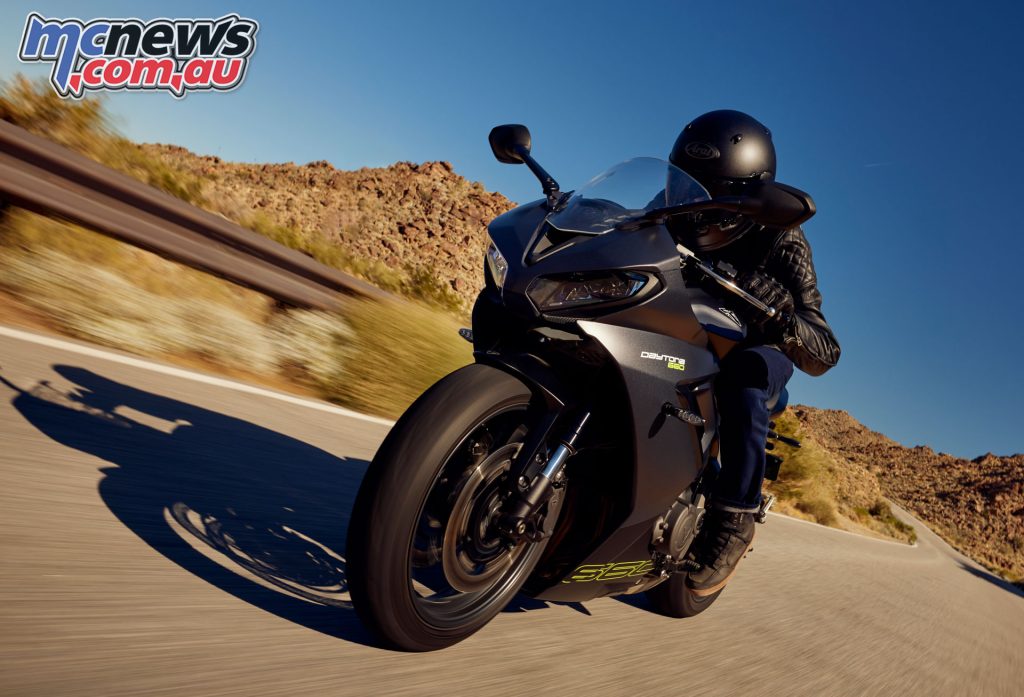
The new Daytona 660 will be sharply priced from $14,790 rideaway when it arrives in local Triumph dealers in March.
Available in both LAMS and full-power variants, the standard Snowdonia White/Sapphire Black model is priced from $14,790 rideaway while the matt/metallic colours of Satin Granite/Satin Jet Black and Carvival Red/Sapphire Black – also available in LAMS and full-power – are priced from $14,940 rideaway.
2024 Triumph Daytona 660 Specifications
| 2024 Triumph Daytona 660 Specifications | |
| Engine | Liquid-cooled, inline 3-cylinder,12 valve, DOHC, 240° Firing order, 660cc |
| Bore x Stroke | 74.04 x 51.1 mm |
| Compression | 12.05:1 |
| Maximum Power | 70 kW (95 PS) at 11,250 rpm / LAMS: 41.9 kW (57 hp) at 6750 rpm |
| Maximum Torque | 69 Nm at 8250 rpm / LAMS: 62 Nm at 6250 rpm |
| Fuel System | Multipoint sequential electronic fuel injection with electronic throttle control |
| Exhaust | Stainless steel 3-into-1 header system with low single sided stainless steel silencer |
| Final Drive | X-ring chain |
| Clutch | Wet, multi-plate, slip & assist |
| Gearbox | Six-speed |
| Frame | Tubular steel perimeter frame |
| Swingarm | Twin-sided, fabricated steel |
| Wheels | Cast aluminium alloy five-spoke, 17 x 3.5 in, 17 x 5.5 in (F/R) |
| Tyres | 120/70 ZR 17, 180/55 ZR 17 (F/R) |
| Front Suspension | Showa 41 mm upside down separate function big piston (SFF-BP) forks, 110mm wheel travel |
| Rear Suspension | Showa monoshock RSU, with preload adjustment, 130mm wheel travel |
| Front Brakes | Twin 310 mm floating discs, four-piston radial callipers, ABS |
| Rear Brakes | Single 220 mm fixed disc, single piston sliding calliper, ABS |
| Instruments | Multi-function instruments with colour TFT screen |
| Length | 2083.8 mm |
| Width (Handlebars) | 736 mm |
| Height Without Mirrors | 1145.2 mm |
| Seat Height | 810 mm |
| Wheelbase | 1425.6 mm |
| Rake | 23.8° |
| Trail | 82.3 mm |
| Wet weight | 201 kg (90% fuel volume) |
| Fuel Tank | 14 litres |
| Fuel Consumption | 4.9 L / 100 km |
| Emissions Standard | EURO 5+ |
| Service interval | 16,000 km /12 months service interval, whichever comes first |

















































